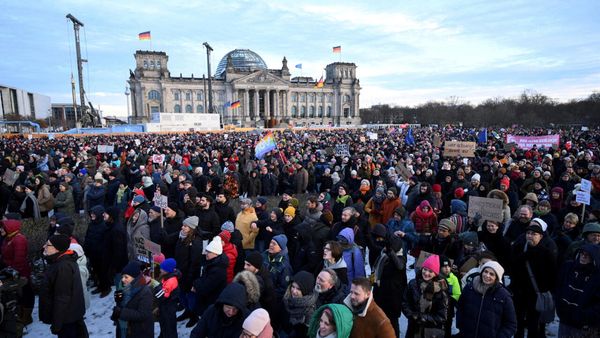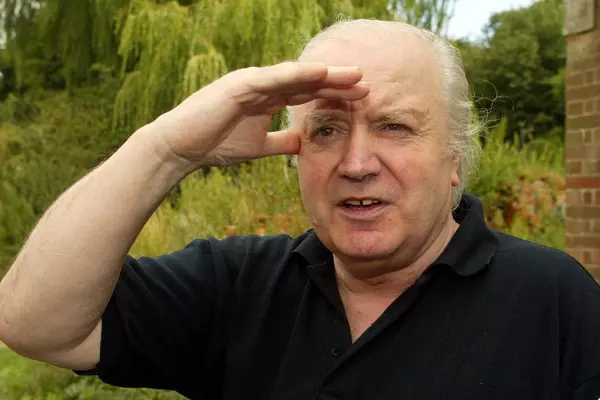
In select cities around the United States, driverless cars run by robotaxi services like Google's Waymo (GOOGL) and Cruise by General Motors (GM) are already roaming the streets and ferrying passengers to and from where they need to be.
Though the technology is touted by investors like ARK Investment's Cathy Wood and moguls like Tesla's (TSLA) Elon Musk, it is not without its issues, which affect passengers and the public alike.
Don't miss the move: Subscribe to TheStreet's free daily newsletter
For instance, last month, residents in San Francisco's South of Market (SoMa) neighborhood reported that they had been losing sleep because Waymo's robotaxis had been making way too much noise in the middle of the night in a large parking lot in the neighborhood.
Additionally, a viral video on X (formerly known as Twitter) exposed potential passenger safety concerns after two men managed to exploit Waymo's pedestrian detection ability to trap a woman in one of its robotaxis while verbally harassing them on the street.
But while Waymo and similar services are being scrutinized by residents of the cities they operate in and the federal government, a new report by Reuters has shined a light on a more dire problem involving Elon Musk's golden goose.

Full Self-Driving, more like Full Self-Uber
A new report from Reuters published on October 3 highlighted the use of Tesla's Full Self-Driving (FSD) technology by the drivers of rideshare applications like Lyft (LYFT) and Uber (UBER,) who use the EV automaker's vehicles for their jobs.
From a purely logistical standpoint, 11 drivers who use FSD on the job tell Reuters that despite its limitations, they use it because it allows them to destress and work longer hours, which allows them to earn much more money per stint.
Reuters pointed out that while Waymo and Cruise's vehicles are subject to heavy legal regulation, rideshare riders who hop into a Tesla with a driver actively using FSD are the responsibility of the driver and the driver alone, which has its consequences.
More Business of EVs:
- A ridiculous Tesla Supercharging flaw is making EV owners hostile
- Study: EV charging stations have a secret built-in business benefit
- Mercedes latest tech is ahead of Tesla in one key area
A YouTuber and FSD Uber driver walk into a bar
The report shed light on an accident involving an FSD-using Tesla Uber driver that occurred on April 10 near Las Vegas. As per Reuters, the Tesla rammed into an SUV at an intersection.
The driver, who Reuters identified as Justin Yoon, a DJ and YouTuber posting under the handle "withdjvu" was seen on in-car footage in the driver's seat with his hands off the wheel while the car was traveling at 46 miles per hour, only to take control when the FSD software failed to detect the SUV crossing the road in front of his car.
In a series of videos called "Project Robotaxi" on his YouTube channel, Yoon captured himself working, picking up passengers for Uber in his Tesla Model Y, often on the tagline of someone "experiencing" a car driving under Tesla's FSD software.
In a video published to the site on May 30, he showed video footage of the April 10 crash from multiple angles, which depict him colliding into the side of a white Jeep Grand Cherokee, the driver of which he claimed to be at fault for the crash.
"Just to tell you guys whose fault it was [...] it was the other driver's fault, as you can see from the footage," Yoon said in the video.
"There was a SUV on the right hand side, on the right lane from where I was, it was creating a blind spot for me and the other driver, and the other driver couldn't see me coming. [...] It was pretty much two or three seconds before I was about to crash into the car."
Yoon said that he and his passenger suffered minor injuries, and his 2020 Model Y Performance was totaled, but he noted that the technology could be made better.
"The point is, car, robotaxi per se, should be able to see more than humans, right? Tesla currently, Full Self-Driving, with all these eight cameras placed around the vehicle, it's able to see 360 degrees or 180; whatever; it's able to see more than humans, but it's still not able to see other cars in front of the car that's in front of me," Yoon said. "LiDAR and radar[...] they're probably necessary for a safety reason.
Related: Tesla rival is not playing games with self-driving safety
Los Angeles-based rideshare driver and senior contributor on "The Rideshare Guy" YouTube channel told Reuters that based on his conversations with fellow drivers on the channel, he estimates that 30% to 40% of U.S.-based Tesla-driving rideshare drivers use FSD regularly; which can underestimate the kind of risk everyday Uber and Lyft riders are subjected to when they enter a Tesla.
In late July, a report from the Wall Street Journal found that after analyzing details of more than 200 crashes involving Teslas equipped with Autopilot and FSD, there were many foundational flaws and shortcomings associated with the vehicle's reliance on cameras.
Tesla data experts use machine learning to train the vehicle's cameras to spot objects like road signs, stopped cars, trucks, or animals. However, according to Carnegie Mellon electrical and computer engineering associate professor Phil Koopman, there are major gaps in what the software behind the cameras actually sees, which can be a huge problem.
“The kind of things that tend to go wrong with these systems are things like it was not trained on the pictures of an over-turned double trailer - it just didn’t know what it was,” Koopman said. “A person would have clearly said ‘something big is in the middle of the road,’ but the way machine learning works is it trains on a bunch of examples. If it encounters something it doesn’t have a bunch of examples for, it may have no idea what’s going on.”
Elon Musk has repeatedly said that LiDAR technology is "unnecessary" for Tesla and that installing such sensors on its cars would be like fitting it with a "whole bunch of expensive appendices."
In a statement to Reuters, Uber and Lyft reiterated that drivers are responsible for passenger safety.
"Drivers agree that they will not engage in reckless behavior," a Lyft representative told Reuters.
"Drivers are expected to maintain an environment that makes riders feel safe; even if driving practices don't violate the law," Uber told Reuters.
Tesla, Inc. which trades on the NASDAQ under the ticker TSLA, is down 3.75% today, trading at $239.67 at the time of writing.
Related: Veteran fund manager sees world of pain coming for stocks







